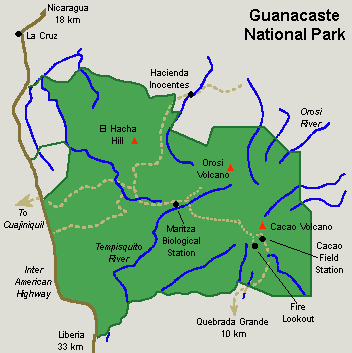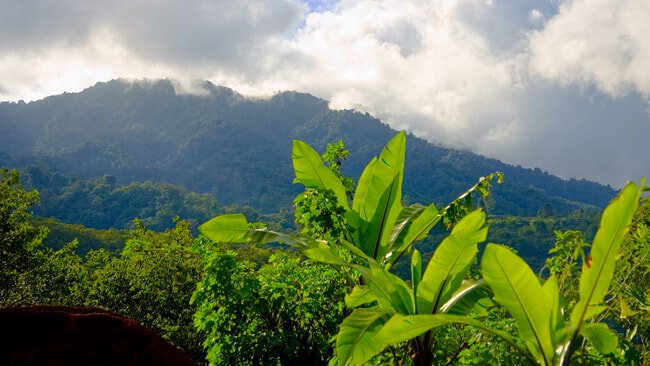|
Guanacaste National Park, located on the east side of the Interamerican Highway across from Santa Rosa National Park, was created in 1989 to protect the volcano slope evergreen forest and the Orosi and Cacao volcanoes' cloud forests. This project was founded to help secure a migration route for those animals that move into the highlands during the dry season. The park contains several interesting trails and four research stations, of which at least one will remain open for tourists, researchers and photographers. In December 1999, the Area de Conservación Guanacaste was declared by the UNESCO as a Natural Heritage Site of Humanity.
|
|
Wildlife in the park is varied; 140 species of mammals, over 300 birds, 100 amphibians and reptiles, and over 10,000 species of insects have been identified. The most common mammals are howler monkeys, white-faced capuchins, long-nosed armadillos and coatis. There are also collared peccaries, pocket mice, white-tailed deer, pumas, ocelots, black hawks, and many others.
|
If you need information about tours to Guanacaste National Park let us know, we'll be glad to help you.







